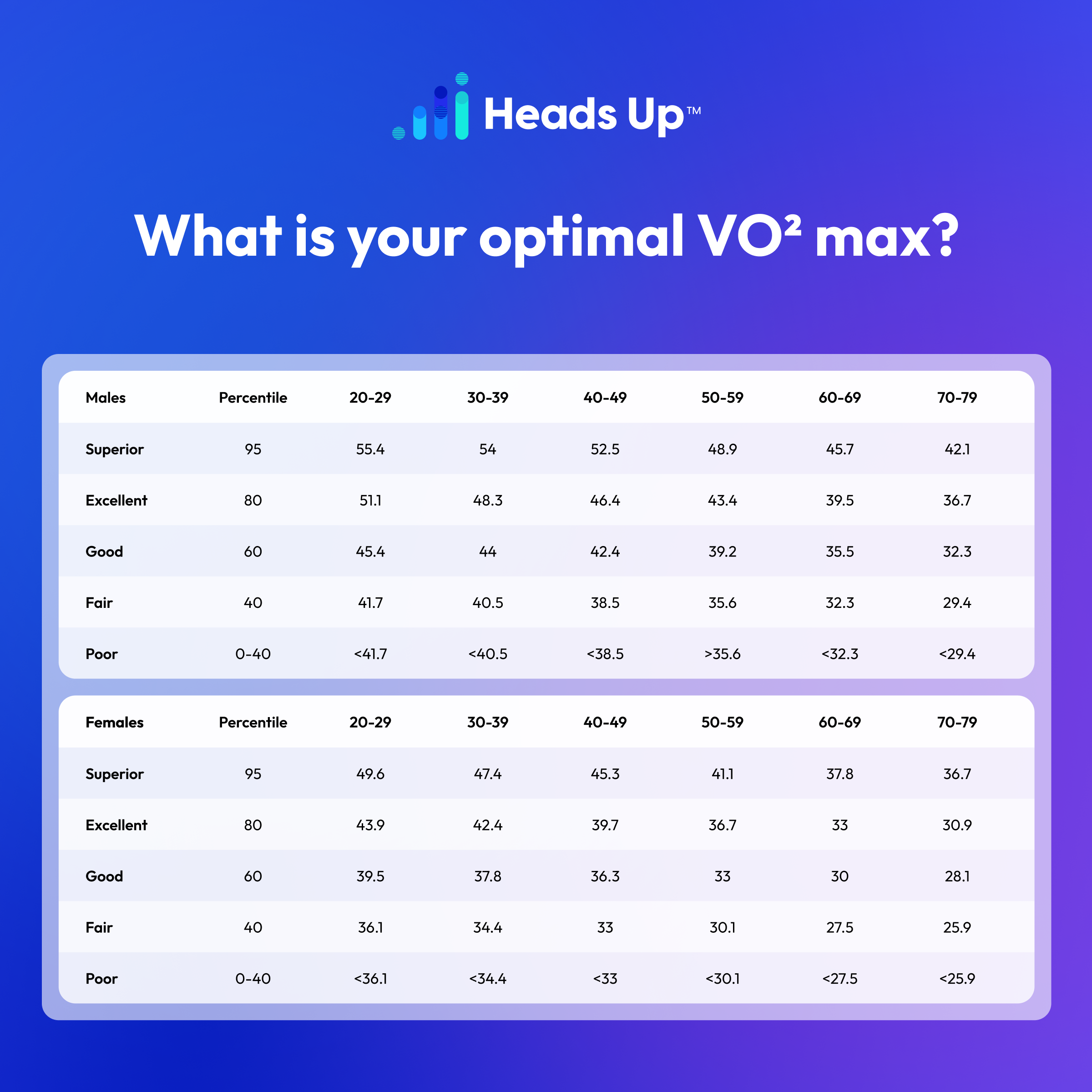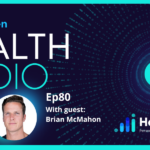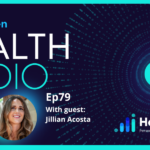Quantifying Biological Age and Enhancing Longevity
VO2 max is getting a lot of attention in the news these days, especially with Peter Attia highlighting its importance in his book “Outlive.”
One of the larger studies tracked VO2 max for over 100K people and found significant reductions in all-cause mortality as VO2 max improved. What’s more, there seemed to be no upper limit observed. The higher the VO2max, the more all-cause mortality declined!
That’s why many of the top longevity practices on Heads Up are tracking VO2 max on their client’s dashboard and using the ‘Reports’ feature to track changes over time.
Learn how health professionals use Heads Up for optimizing their patients longevity.
What is a Good VO2 Max Score?
Here we’ve included charts that break down VO2 max by age and gender.

At Heads Up, we’ve made it easier for you to track this critical longevity metric for yourself and clients. To start tracking VO2 max for your clients, here’s how you can do it in Heads Up Health.
- Manual data entry of VO2 max data into a dashboard tile.
- Automated data collection from wearables integration.
Many top wearables like Oura, Apple Watch, and Garmin can approximate VO2 max during runs or walks and update the dashboard automatically. This feature can enhance your ability to provide real-time insights to your clients.
- Track VO2 Max for Each Client: Easily monitor VO2 max on the client dashboard.

- Monitor Trends Over Time: Use the reports page to see how VO2 max progresses for each client.

- Compare Across Cohorts: Use our upcoming signals feature to analyze VO2 max across different groups (coming soon).
VO2 max testing is a critical component in longevity programs, providing insights into cardiovascular fitness and overall health.
Utilizing VO2 max data can help practitioners tailor fitness and wellness plans, monitor progress, and make informed decisions to enhance client outcomes. Heads Up simplifies this process by offering an intuitive platform where practitioners can easily track and analyze VO2 max data over time.
With seamless integration from top wearables, real-time updates, and comprehensive reports, you can provide your clients with the best personalized care.
Science of VO2Max
VO2 max, or maximal oxygen uptake, is a critical measure of cardiovascular fitness and aerobic endurance. It reflects the body’s capacity to utilize oxygen during intense exercise, offering a window into an individual’s physiological health. Emerging research highlights the role of VO2 max in not only gauging physical fitness but also in quantifying biological age and predicting longevity.
This article explores the science behind VO2 max, its implications for biological age assessment, and strategies to enhance VO2 max for improved longevity. Additionally, we discuss how healthcare professionals can utilize platforms like Heads Up to track and validate longevity outcomes.
Introduction
As the pursuit of longevity becomes a significant focus in modern healthcare, understanding and measuring biological age has gained prominence. Unlike chronological age, biological age reflects the physiological state of an individual’s body, influenced by genetics, lifestyle, and environmental factors. VO2 max stands out as a potent marker in this context, providing insights into cardiovascular health and overall physiological function.
Understanding VO2 Max
VO2 max, defined as the maximum volume of oxygen that an individual can utilize per minute during exhaustive exercise, is a key indicator of aerobic fitness. It is expressed in milliliters of oxygen consumed per kilogram of body weight per minute (ml/kg/min). The higher the VO2 max, the greater the body’s capacity to perform sustained aerobic activities.
Measuring VO2 Max
VO2 max is typically measured through graded exercise tests, where an individual performs increasing levels of exertion on a treadmill or cycle ergometer until volitional fatigue. During the test, oxygen consumption and carbon dioxide production are measured using a metabolic cart to determine the point at which oxygen uptake plateaus despite the increased workload.
VO2 Max and Biological Age
The Link Between VO2 Max and Longevity
A robust body of evidence links higher VO2 max levels with increased longevity. Studies have shown that individuals with higher VO2 max scores tend to have lower risks of cardiovascular disease, metabolic disorders, and mortality. This association stems from the role of VO2 max as a marker of cardiorespiratory fitness, which is crucial for maintaining cardiovascular health and metabolic efficiency.
Quantifying Biological Age with VO2 Max
VO2 max serves as a valuable metric for assessing biological age. Unlike chronological age, which simply accounts for the number of years lived, biological age encompasses the functional status of an individual’s body. A high VO2 max suggests a younger biological age, reflecting better overall health and a higher capacity for physical exertion.
Recent studies have developed algorithms that use VO2 max, along with other physiological parameters, to estimate biological age.
Tracking VO2 Max Over Time
Importance of Longitudinal Tracking
Tracking VO2 max over time provides valuable insights into an individual’s health trajectory. Regular assessment can help identify trends and detect early signs of cardiovascular or metabolic decline, allowing for timely interventions. For athletes and fitness enthusiasts, monitoring VO2 max helps tailor training programs to optimize performance and recovery.
Using platforms like Heads Up, individuals can track VO2 max and other biometric data longitudinally. This enables a comprehensive view of health trends and provides a basis for data-driven decisions regarding health and wellness interventions.
Methods for Tracking VO2 Max
There are several methods for tracking VO2 max, ranging from laboratory-based assessments to wearable technology:
- Laboratory Assessments: These provide the most accurate measurements, typically involving graded exercise tests with metabolic analysis.
- Field Tests: Submaximal tests like the Cooper 12-minute run or the Rockport walk test offer practical alternatives for estimating VO2 max in less controlled environments.
- Wearable Technology: Advances in wearable tech have made it possible to estimate VO2 max through devices like fitness trackers and smartwatches, which use algorithms based on heart rate and other physiological data. Heads Up can integrate data from these devices, providing a seamless way to monitor and analyze VO2 max trends over time.
Benefits of Regular Monitoring
Regularly monitoring VO2 max allows for the assessment of the effectiveness of training regimens, adjustments in lifestyle interventions, and tracking of long-term health outcomes. For individuals focused on longevity, maintaining or improving VO2 max is crucial for ensuring sustained health and vitality. Platforms like Heads Up enable users to visualize their progress and gain insights into their health trajectory, facilitating better health management and outcome tracking.
Improving VO2 Max for Longevity
Exercise and VO2 Max
Exercise is the most effective way to enhance VO2 max. Both aerobic and high-intensity interval training (HIIT) have been shown to significantly improve VO2 max levels.
- Aerobic Training: Activities such as running, cycling, and swimming increase cardiovascular endurance by enhancing the efficiency of the heart and lungs in oxygen transport and utilization. A study by StWisloff et al. (2006) showed that regular aerobic exercise could lead to substantial improvements in VO2 max, with corresponding reductions in the risk of cardiovascular disease and mortality.
- High-Intensity Interval Training (HIIT): HIIT involves short bursts of intense exercise followed by rest or low-intensity periods. This form of training has been found to be particularly effective in boosting VO2 max. Research by Gibala et al. (2012) indicated that HIIT could produce comparable or superior improvements in VO2 max compared to traditional endurance training, with the added benefit of shorter workout durations.
Heads Up can track changes in VO2 max and other relevant health metrics over time, providing a comprehensive overview of the impact of different exercise regimens on cardiovascular fitness and biological age.
Dietary and Lifestyle Factors
Beyond exercise, dietary and lifestyle factors also play a role in optimizing VO2 max. Proper nutrition, adequate hydration, and sufficient sleep are essential for supporting cardiovascular health and enhancing aerobic capacity.
- Nutrition: Consuming a balanced diet rich in antioxidants, omega-3 fatty acids, and other nutrients can improve cardiovascular function and support overall fitness. For example, nitrates found in leafy greens have been shown to enhance blood flow and oxygen delivery to muscles, potentially boosting VO2 max.
- Lifestyle: Avoiding smoking, managing stress, and maintaining a healthy weight are critical for preserving cardiovascular health and maximizing VO2 max. Chronic stress and poor sleep quality can negatively impact aerobic capacity and overall fitness.
Heads Up can help individuals track their dietary intake and lifestyle factors, providing insights into how these elements influence their VO2 max and overall health.
Personalized Approaches to Enhancing VO2 Max
Given the individual variability in response to exercise and lifestyle interventions, personalized approaches to enhancing VO2 max are recommended. Genetic factors, baseline fitness levels, and personal preferences should guide the design of tailored programs to achieve the best outcomes. With Heads Up, users can customize their health tracking to focus on the most relevant data, allowing for more personalized health management and better outcomes.
VO2 Max in the Context of Aging
VO2 Max Decline with Age
VO2 max typically declines with age, with studies suggesting an average annual reduction of about 1% after the age of 25. This decline is associated with a decrease in cardiac output, muscle mass, and mitochondrial efficiency. However, regular physical activity can attenuate this decline, helping to maintain a higher level of cardiovascular fitness and functional capacity in older adults.
Strategies to Counteract VO2 Max Decline
To counteract the age-related decline in VO2 max, a combination of aerobic and resistance training is recommended. Engaging in regular physical activity, particularly exercises that challenge the cardiovascular system, can help preserve and even improve VO2 max levels into later life.
- Aerobic Exercise: Activities like brisk walking, jogging, and swimming are effective for maintaining cardiovascular health and aerobic capacity.
- Strength Training: Building muscle mass through resistance exercises supports overall fitness and enhances the body’s ability to utilize oxygen during physical activity.
Using Heads Up, individuals can track their exercise routines and monitor changes in VO2 max over time, allowing them to tailor their fitness plans to effectively counteract the effects of aging.
How Heads Up Can Help Healthcare Professionals
Tracking and Monitoring Longevity Programs
For healthcare professionals offering longevity programs, tracking and monitoring clients’ health metrics over time is crucial. Heads Up provides a comprehensive platform that allows practitioners to:
- Monitor Key Health Metrics: Track VO2 max and other critical health indicators such as heart rate variability (HRV), blood pressure, and glucose levels, offering a holistic view of a client’s health status.
- Analyze Data Trends: Utilize advanced analytics to identify trends and patterns in clients’ health data, providing actionable insights for personalized interventions.
- Validate Outcomes: Assess the effectiveness of longevity interventions by comparing pre- and post-program data, helping to validate the success of various health strategies.
Enhancing Client Engagement
By offering clients access to their own health data through Heads Up, healthcare professionals can encourage greater engagement and adherence to longevity programs. Clients can track their progress, set health goals, and gain a deeper understanding of how their lifestyle choices impact their long-term health.
Case Studies and Validation
Heads Up also supports the creation of case studies and validation of longevity programs through the data collected within the health platform. By documenting clients’ health improvements over time, healthcare professionals can build a repository of success stories and evidence-based outcomes that highlight the efficacy of their interventions.
Long Live VO2Max
VO2 max is a critical measure of cardiovascular health and a valuable tool for assessing biological age. By providing insights into an individual’s physiological state, VO2 max helps predict longevity and guide interventions to promote long-term health. Regular monitoring and personalized strategies to enhance VO2 max can play a crucial role in maintaining vitality and extending the healthy lifespan.
Platforms like Heads Up are instrumental for both individuals and healthcare professionals in tracking and analyzing health data, validating longevity programs, and ensuring sustained health and wellness. As the understanding of biological age and longevity continues to evolve, VO2 max and tools like Heads Up will remain key components in the pursuit of optimal health and well-being.
Discover More
Learn more about using Heads Up to track VO2 Max combined with other important health metrics with patients. Discover Longevity Dashboards.
References:
- Satoru Kodama, MD, PhD; Kazumi Saito, MD, PhD; Shiro Tanaka, PhD; et al JAMA. 2009;301(19):2024-2035. doi:10.1001/jama.2009.681
- Bassett, D. R., & Howley, E. T. (2000). Limiting factors for maximum oxygen uptake and determinants of endurance performance. Medicine and Science in Sports and Exercise, 32(1), 70-84.
- Blair, S. N., Kohl, H. W., & Paffenbarger, R. S. (1989). Physical fitness and all-cause mortality: A prospective study of healthy men and women. JAMA, 262(17), 2395-2401.
- Myers, J., Prakash, M., Froelicher, V., Do, D., Partington, S., & Atwood, J. E. (2002). Exercise capacity and mortality among men referred for exercise testing. New England Journal of Medicine, 346(11), 793-801.
- Kodama, S., Saito, K., Tanaka, S., Maki, M., Yachi, Y., Asumi, M.,… & Sone, H. (2009). Cardiorespiratory fitness as a quantitative predictor of all-cause mortality and cardiovascular events in healthy men and women: a meta-analysis. JAMA, 301(19), 2024-2035.
- Grant, P. M., Dall, P. M., Mitchell, S. L., & Granat, M. H. (2008). Activity-monitor accuracy in measuring step number and cadence in community-dwelling older adults. Journal of Aging and Physical Activity, 16(2), 201-214.
- Wisloff, U., Stoylen, A., Loennechen, J. P., Bruvold, M., Rognmo, Ø., Haram, P. M.,… & Ellingsen, Ø. (2006). Superior cardiovascular effect of aerobic interval training versus moderate continuous training in heart failure patients: a randomized study. Circulation, 115(24), 3086-3094.
- Gibala, M. J., Little, J. P., Macdonald, M. J., & Hawley, J. A. (2012). Physiological adaptations to low-volume, high-intensity interval training in health and disease. The Journal of Physiology, 590(5), 1077-1084.
Want to learn more?
💡 Discover how top Longevity Experts quantify and improve longevity outcomes in their practice.
Sign up for the longevity training.




















